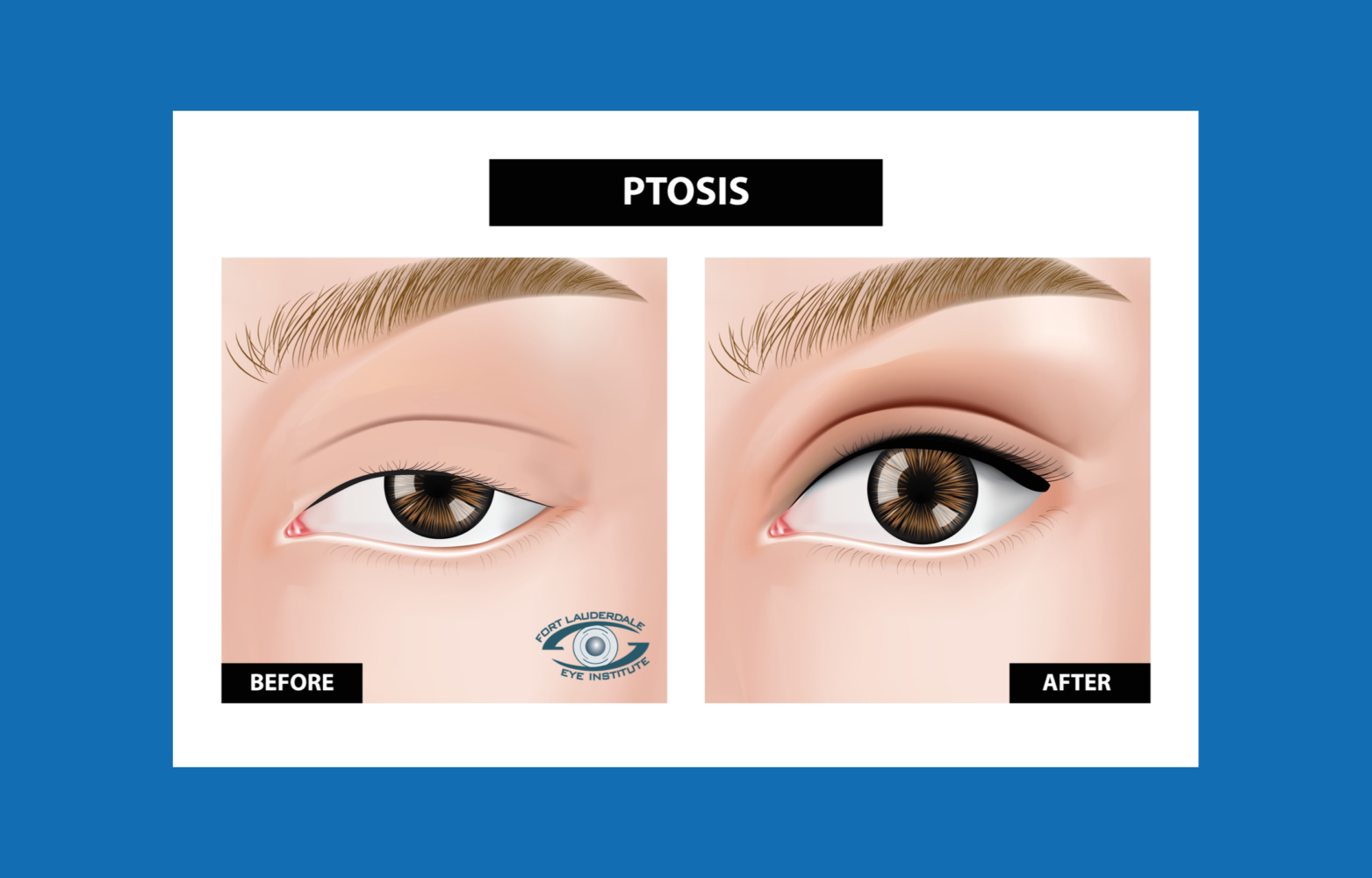What is Ptosis? Drooping of the upper eyelids is known as ptosis. It can affect one or both eyelids, be inherited and be present at birth or occur later in life. The cause of congenital ptosis is typically due to a lack of development of eyelid muscles known as levators. The function of the levator muscle is to raise the eyelid. With children born with ptosis, it is important for them to be treated at a young age to avoid interference with vision development.
Causes of Ptosis
With the exception of congenital ptosis, this condition is more common in the elderly due to deterioration of the muscles that raise the eyelids or their nerve supply. Acquired ptosis is the most common type. Certain drugs have been known to cause ptosis. There are numerous other causes of droopy eyelids:
- Tumors
- Systemic diseases
- Neurological disorders
There are varying degrees of severity of droopy eyelids that can range from barely noticeable to completely covering the pupil, iris, and other parts of the eye. Untreated ptosis can lead to amblyopia (lazy eye) or astigmatism.
Watch this video as Dr. Gil Epstein discusses ptosis of the eye.
Types of Ptosis
There are four different classifications of ptosis:
- Mechanical ptosis, when the weight of the eyelid is too great for the muscles to lift
- Myogenic ptosis, sagging of the lid due to a problem with the muscle that raises the eyelid
- Neurogenic ptosis, when the nerves attached to the muscle are affected
- Aponeurotic ptosis, stretching and weakening of the tendon responsible for raising the eyelid
Ptosis Treatment
The most common form of treatment for ptosis is blepharoplasty (levator aponeurosis advancement) where the levator muscle is tightened to improve the appearance and/or vision. When treating congenital ptosis, a sling may be used to allow the forehead muscles to take over the task of lifting the eyelid. This sometimes results in a non-symmetrical appearance, however, the eyelids will be higher than they were prior to surgery.
Recovery typically lasts up to six weeks. And bruising and swelling typically subside within three weeks. Surgery is usually performed as outpatient, in an ambulatory surgical center, under local anesthesia, with intravenous supplemental sedation. And, most people heal with little or no complications at all.







